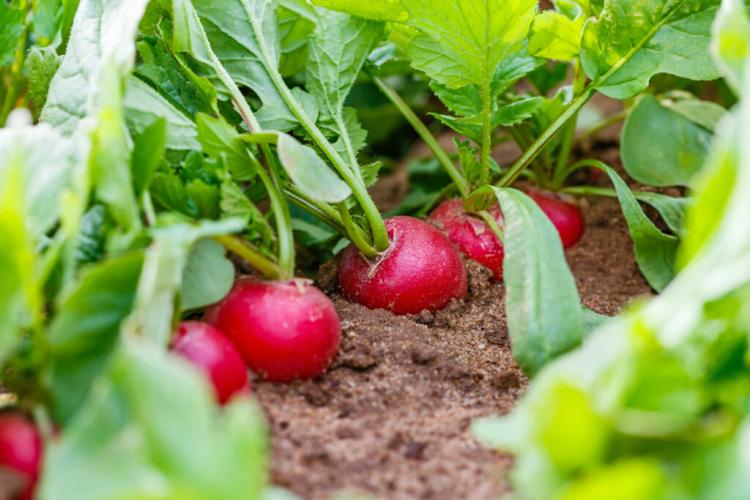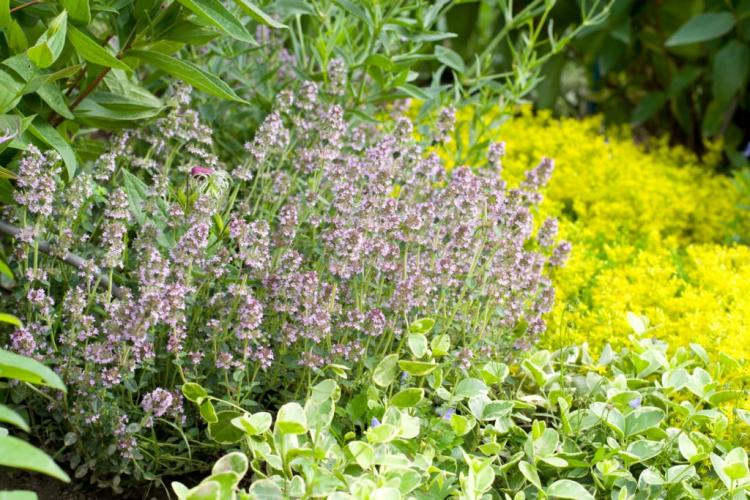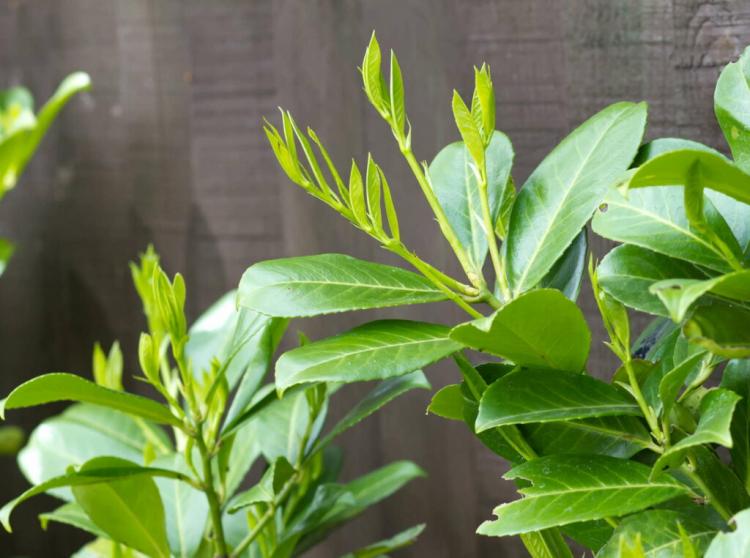Coriander: Types, Taste & Uses Of Asian Parsley
Coriander can be used in many ways and is one of the oldest medicinal plants in the world. We give tips on choosing the variety and using the herb.
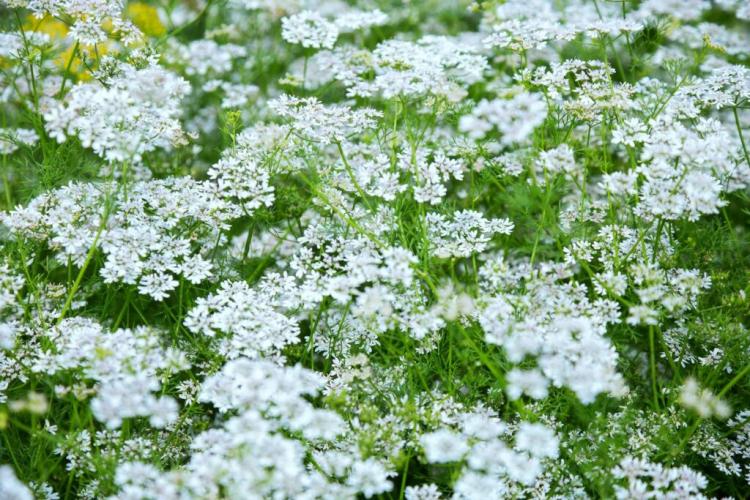
Coriander not only has a fabulous aroma, the flower also visually enhances your bed [Photo: SakSa / Shutterstock.com]
Coriander is a widely used herb that is known all over the world. We will introduce you to the best types of coriander and give you tips on how to use them.
Coriander: origin and properties
Table of Contents
Coriander ( Coriandrum sativum ) belongs to the umbelliferae (Apiaceae) family and is therefore closely related to aniseed ( Pimpinella anisum ), parsley ( Petroselinum crispum ) and caraway ( Carum carvi ). It is also known as Asian parsley. Due to the unpleasant smell of the fresh, not yet dried seeds, which is reminiscent of the secretion of bed bugs, coriander is also known as bug herb. Coriander has been used as a herb and medicinal plant for thousands of years. The feathered herb is mentioned in ancient Sanskrit traditions and also in early Bible texts. In the course of excavations, coriander seeds have already been found in the tomb of Tutankhamun. It can be assumed that the annual herb has its origins in the Mediterranean region.
Real coriander is an annual, not frost-hardy, up to 70 cm high and strongly branched plant with pinnate leaves similar to flat parsley. The umbellate, white to pale pink colored flowers of the coriander appear from June to August – they have much larger petals on the outside than in the center of the small cones. The flowers attract numerous insects. After pollination, peppercorn-sized, hemispherical, light brown fruits are formed. From September the coriander fruits can be harvested and dried and used as a spice.
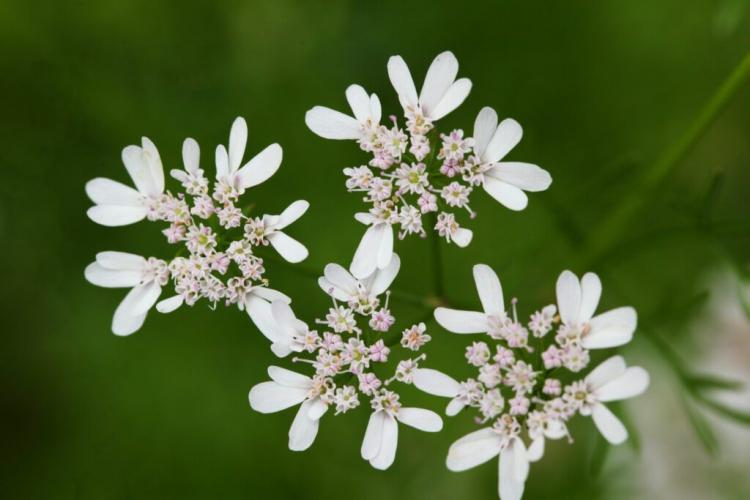
The outer petals of the coriander are enlarged and colored white or pink [Photo: Le Do / Shutterstock.com]
What is the difference between coriander and parsley? Parsley and coriander are closely related. The biggest difference between coriander and parsley is in the taste, with coriander having a significantly stronger, earthy, caraway-like aroma with orange-like nuances.
You May Also Like Parsley Varieties
The most aromatic coriander species and varieties
The coriander genus Coriandrum includes a total of only three species, with only the real coriander being grown commercially. Some varieties of coriander have been specially bred with a focus on the taste or size of the seeds:
- ‘Indian coriander’: Annual coriander up to 70 cm with elongated seeds and a sweeter aroma than many other varieties. Important ingredient for the garam masala spice mix.
- ‘Jantar’: Nutty-tasting coriander with shiny leaves and very small, extremely aromatic seeds. Both the foliage and fresh and dried seeds can be used.
- ‘Thuringian’: Old, traditional German variety with good seed formation. The plants reach a height of about 40 cm.
In addition to the dried or ground fruits, it is well known that coriander can also be used in the kitchen. While the seeds taste spicy and woody, the leaves of the coriander have a strong, earthy-spicy aroma. There are now varieties on the market that have been specially bred for their suitability as leaf coriander.
- ‘Caribe’: Coriander with a particularly high leaf yield and a height of 40 to 60 cm.
- ‘Confetti’: Coriander with finely divided, dill-like leaves and a sweeter taste than many other varieties.
- ‘Dwarf Lemon’: Compact growing variety of coriander up to 30 cm with a lemon-like aroma.
- ‘Marino’: Coriander with strong leaf growth and a spicy taste.
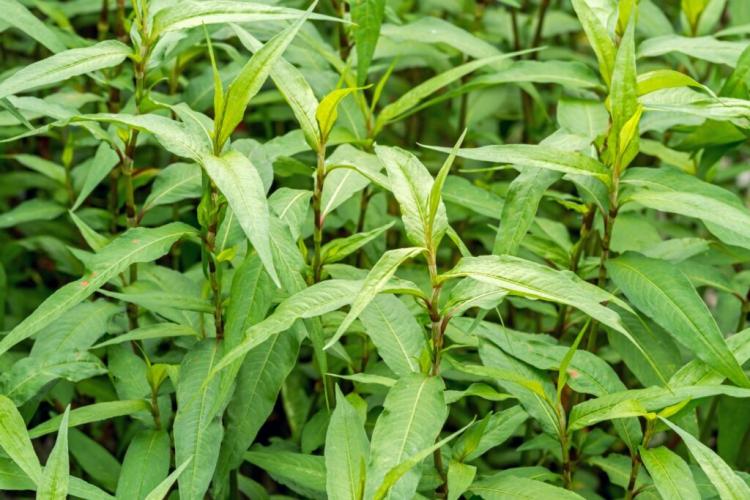
Vietnamese coriander is a perennial alternative to real coriander [Photo: ntdanai / Shutterstock.com]
The Mexican coriander ( Eryngium foetidum ) is also known as the long coriander and also belongs to the umbelliferae family, but to a different genus than the real coriander. The elongated, toothed leaves on the up to 30 cm high plants have a strong coriander aroma. The Vietnamese coriander ( Persicaria odorata ) is similar in smell and taste, but belongs to the knotweed family (Polygonaceae) and is therefore not related to the real coriander. However, the Vietnamese coriander has a clear advantage over the bug herb: It is perennial and more robust to cool temperatures, but should overwinter indoors.
Once you have decided on a suitable variety, you will find important tips for planting coriander in our special article.
How does coriander taste?
As the coriander grains ripen and dry after harvest, the characteristic spicy, earthy, caraway-like aroma develops with a slight hint of orange peel. The leaves of coriander, which can also be used as a spice, have a rather spicy, hot, peppery to bitter taste. Opinions differ when it comes to the palatability of the coriander leaves: For some, coriander green tastes soapy and unpleasant, which is probably genetically determined.
Is Coriander Healthy?
Coriander is a healthy herb that also stimulates digestion. The many essential oils it contains, such as coriandrol, geraniol and myrcene, can have an antibacterial effect. The coriander green contains numerous vitamins as well as iron and higher amounts of potassium.
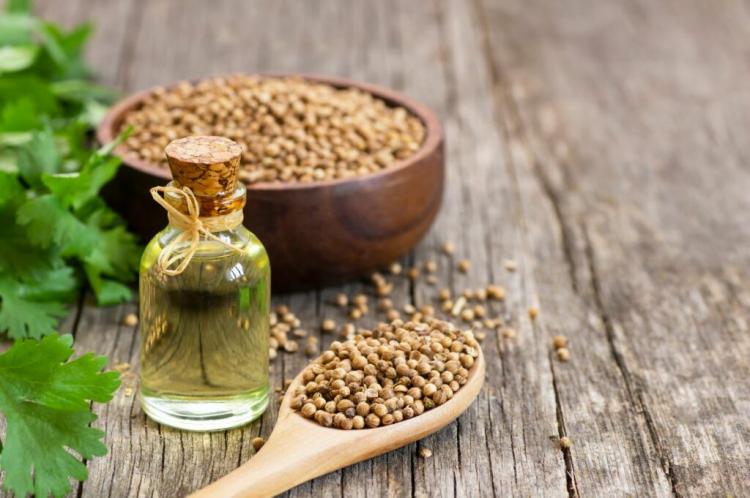
Coriander has a long tradition in the kitchen and as a medicinal plant [Photo: Halil ibrahim mescioglu / Shutterstock.com]
Use of coriander
Coriander can be used in a variety of ways, because all parts of the plant are edible. In Thailand, the roots are even used in various dishes. The harvest time for coriander begins in summer, first of all for the leaves and flowers, and in autumn for the seeds. In our special article you will find detailed instructions on how to harvest and preserve coriander.
Use coriander seeds
Some of the essential oils for the taste of the coriander seeds are only formed when the seeds are dried. This is why post-harvest drying is extremely important for a full aroma. Ground coriander seeds are used, for example, in Frankfurt sausages, cheese or baked goods as well as spice mixtures for gingerbread, curries or spirits such as Karmelitergeist.
Coriander has been used as a medicinal plant since ancient times for loss of appetite, colds, joint pain and migraines. In the case of flatulence and other gastrointestinal complaints, the seeds are crushed and poured hot and given as coriander tea, although the beneficial effect of coriander on digestive problems and as an antispasmodic is less than that of fennel ( Foeniculum vulgare ) and caraway. The real coriander is also known as vertigo grain, as the seeds can cause intoxication if consumed in excess. In addition, the oil extracted from the seeds is used as a fragrance in the perfume industry.
Use coriander greens
The leaves of the coriander are used fresh in many dishes in Indian, Asian and South American cuisine. In a traditional Spanish garlic sauce, the mojo verde, the coriander leaves provide the green color.
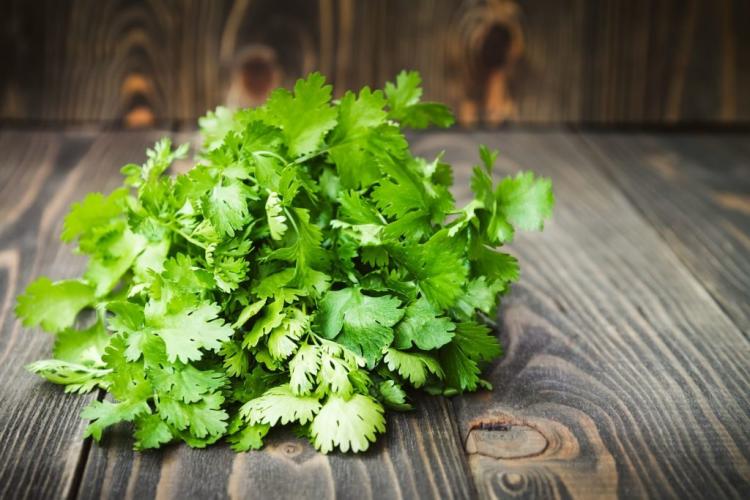
The coriander leaves should be used fresh as possible, as they only keep for a few days [Photo: KatyaPulina / Shutterstock.com]
Coriander flowers
In addition to the leaves and fruits, the flowers of the coriander are edible and also have the typical aroma of the herbs. They can also be used as a tasty decoration.
Substitute for coriander
Coriander can be replaced with a mixture of mild-tasting parsley, tarragon ( Artemisia dracunculus ) and caraway seeds if the taste is not well tolerated.
In order to achieve a good yield of coriander greens or the aromatic seeds, care should be taken to optimally care for the coriander.


